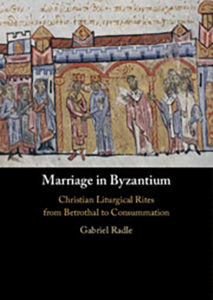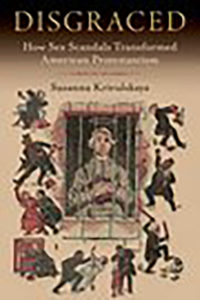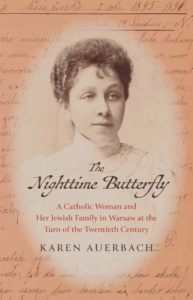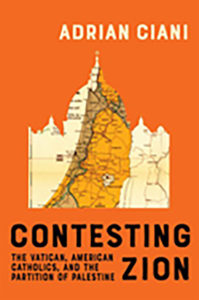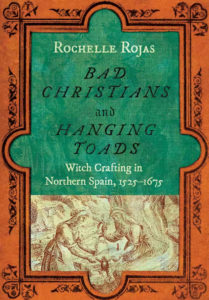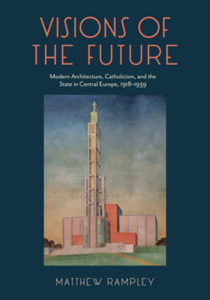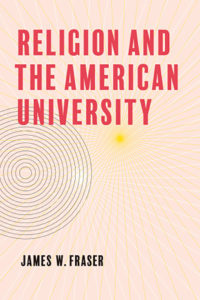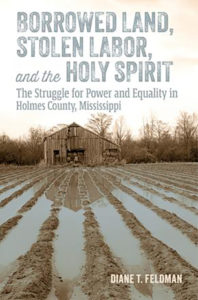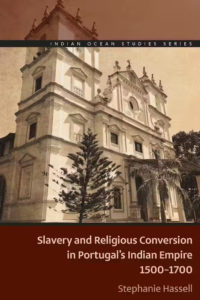Monthly Updates on Recent Books in the History of Christianity
To raise awareness of recent books in the history of Christianity, the editorial staff of Church History: Studies in Christianity and Culture highlights each month a list of 10-15 books in diverse periods and geographical regions that we hope will be of interest to our members. We include here below the 57th monthly list, chosen by our staff, with excerpts from the publishers’ blurbs.
Gabriel Radle, Marriage in Byzantium: Christian Liturgical Rites from Betrothal to Consummation
Across cultures, weddings have historically represented some of the most important and extravagant celebrations. This is the first comprehensive study of marriage rituals in the Eastern Mediterranean world of Byzantine Christianity. Using a large corpus of unedited liturgical manuscripts as well as other evidence from jewelry and law to visual representations and theological treatises, Gabriel Radle reconstructs the ceremonies used by the Byzantines to formalize the marriage process, from betrothal to rites of consummation. He showcases the meanings behind rituals of kinship formation and sexual relations and explores how the practice of Byzantine Christianity crossed fluid borders between the church and the domestic sphere. The book situates the development of Byzantine Christian marriage traditions alongside those of other religious communities and, in placing liturgical manuscripts at the heart of this study, paves new methodological paths for the use of ritual sources in the writing of Byzantine history.
Suzanna Krivulskaya, Disgraced: How Sex Scandals Transformed American Protestantism
Disgraced is a sweeping religious and cultural history of Protestant sex scandals in nineteenth and twentieth century America. Suzanna Krivulskaya investigates the cultural consequences of scandal, what demands the public made of religion in response to revelations of pastoral misdeeds, and how Protestantism itself changed in the process. From the birth of the modern press to the advent of the internet age, the book traces the public downfalls of religious leaders who purported to safeguard the morality of the nation. Along the way, Protestant ministers' private transgressions journeyed from the privilege of silence to the spectacle of sensationalism.
At first hesitant to report on sexual misconduct among the clergy in order to protect the reputation of Protestantism writ large, newspapers embraced the genre of pastoral scandal in the 1870s, when the biggest celebrity minister of the era, Henry Beecher, stood trial for adultery. Scandal reporting escalated in the following decades, creating multiple publicity crises, the likes of which continue to plague churches to this day. As Protestant institutions struggled to protect their reputations, they turned to secrecy and silencing-often foregoing opportunities for engaging in productive reckoning with the problem of sexual hypocrisy among their clergy. Sex scandals, it turns out, have not been mere aberrations in the history of modern Protestantism; they have, in fact, been key to its development.
Disgraced shows how the persistence of stories about misbehaving Protestant ministers allowed the press to compete with the pulpit as a source of moral authority, forced denominations to confront the problems that scandal exposed, and emboldened public scrutiny of religious piety. In its broad scope and compelling storytelling, the book is a timely contribution to the current moment of cultural reckoning with religious hypocrisy, charismatic authority, and sexual abuse.
Karen Auerbach, The Nighttime Butterfly: A Catholic Woman and Her Jewish Family in Warsaw at the Turn of the Twentieth Century
When Alicja Lewental’s parents came of age in the middle of the nineteenth century, they believed they did not have to choose between two communities, one Polish and the other Jewish. But by the time Alicja was growing up in the 1890s, it seemed that for some Polish nationalists there was little Jews could do to be accepted unequivocally as Poles. As Alicja entered young womanhood and her father, a prominent publisher, became the target of polemics casting him as an outsider in Polish culture, her mother came to believe that only through her daughters’ conversion to Catholicism and marriage to Catholic men could their family achieve acceptance in Polish society. The Lewentals’ lives and their aspirations for belonging played out in Warsaw’s homes, salons, and bookstores in a modernizing city.
Drawing on Alicja Lewental’s diary and other sources, historian Karen Auerbach provides a unique window onto how the Lewentals and their circle navigated a time of increasing ambivalence about the possibility for Jewish belonging to the Polish nation. As exclusionary notions of what it meant to be Polish gained traction in politics, Alicja and her family encountered these ideas in their private lives.
Adrian Ciani, Contesting Zion: The Vatican, American Catholics, and the Partition of Palestine
McGill-Queen's University Press
The modern relationship between the Vatican and the State of Israel is rooted in a long history of hostility between Judaism and Roman Catholicism. Through the centuries, popes and theologians marginalized the Jewish people, assigning them collective guilt for the death of Jesus Christ and claiming that the sacred territory of Palestine was the true patrimony of the Roman Catholic Church. With the advent of political Zionism in the nineteenth century, Catholic fears of a Jewish-dominated Palestine were renewed.
Contesting Zion examines the relationship between the Vatican and the Zionist movement from the Balfour Declaration in 1917 to the first decade of Israeli statehood. Adrian Ciani considers the transnational nature of Catholic responses to Zionism and the creation of Israel, with a focus on the Catholic Church in the United States. From the 1920s through the 1950s, American Catholic leaders became crucial intermediaries between Washington and the Vatican. Speaking as both loyal American citizens and devout Catholics, they were uniquely positioned to articulate the Vatican’s policy objectives to the American government, including on the future of Palestine. American Catholics were also instrumental in advocating the church’s Palestine policy at the United Nations, playing a central role in the Holy See’s attempts to shape the twentieth-century international order.
From the 1920s through the 1960s, Contesting Zion argues convincingly, American Catholics were at the forefront of the Vatican’s efforts to sway the fate of Palestine and to influence the future of the wider region.
Rochelle Rojas, Bad Christians and Hanging Toads: Witch Crafting in Northern Spain, 1525–1675
Bad Christians and Hanging Toads tells riveting stories of witchcraft in everyday life in early modern Navarra. Belief in witchcraft not only emerged in moments of mass panic but was woven into the fabric of village life. Some villagers believed witches sickened crops and cows with poisonous powders, others thought they engaged in diabolism and perverted sex, and still others believed they lovingly raised toads used to commit evil deeds. Most villagers, however, simply saw witches as those with reputations of being mala cristianas—bad Christians. Rochelle Rojas illuminates the social webs of accusations and the pathways of village gossip that created the conditions for the witch beliefs and trials of the period.
While studies of witchcraft in Spain tend to focus on the inquisitorial trials and witch panic of 1609–14, Bad Christians and Hanging Toads turns to witch trials conducted by the region's secular judiciary, Navarra's royal tribunals, tracing the prosecution of accused witches over 150 years. Using detailed evidence from trial records and neighbors' testimonies, Rojas vividly brings to life the women and men crafted as witches by their neighbors and the authorities and guides readers through the judicial process, from accusations and the examination of the evidence to sentencing and punishment.
By privileging the voices of villagers throughout, Bad Christians and Hanging Toads demonstrates that the inner logic of early modern European witchcraft trials can be understood only by examining of the local, everyday aspects of witch belief.
Matthew Rampley, Visions of the Future: Modern Architecture, Catholicism, and the State in Central Europe, 1918–1939
Some of the most striking examples of modernist architecture are churches, yet they have seldom been subject to extended critical analysis. In this book, Matthew Rampley provides just such an analysis, focusing on the Catholic Church in interwar Austria, Czechoslovakia, and Hungary.
A powerful institution in the Habsburg Empire, the Catholic Church continued to be a central social, political, and cultural agent after 1918, working in alliance with political parties and national governments to promote visions of a new national culture. As a result, church building took on an important ideological and political function. Rampley’s study is set against the backdrop of two interrelated issues: the role of architecture in the Catholic Church’s response to an increasingly secular modernity, and church architecture as part of the Church’s attempts to shape social and political life in the states that emerged after the collapse of Austria-Hungary. Rampley also examines the aesthetic, cultural, and political contexts that informed architectural projects, including the conflict between Catholicism and social democracy, the embrace of fascism, Catholic theories of technology, and discourses of regionalism and ruralism.
In bringing to light an untold chapter in the history of modern architecture, this book also engages in methodological reflection on the implications of the study of modern church architecture for the historiography of modernism. This book will appeal to students and scholars of architectural history, religious and political history, and interwar Central European history.
Ahmad Greene-Hayes, Underworld Work: Black Atlantic Religion Making in Jim Crow New Orleans
When Zora Neale Hurston traveled to New Orleans, she encountered a religious underworld, a beautiful anarchy of spiritual life. In Underworld Work, Ahmad Greene-Hayes follows Hurston on a journey through the rich tapestry of Black religious expression from emancipation through Jim Crow. He looks within and beyond the church to recover the diverse leadership of migrants, healers, dissidents, and queer people who transformed their marginalized homes, bars, and street corners into sacred space.
Greene-Hayes shows how, while enclosed within an anti-black world, these outcasts embraced Africana esotericisms—ancestral veneration, faith healing, spiritualized sex work, and more—to conjure a connection to freer worlds past and yet to come. In recovering these spiritual innovations, Underworld Work celebrates the resilience and creativity of Africana religions.
James W. Fraser, Religion and the American University
Johns Hopkins University Press
Once the unifying center of American higher education, religion has undergone a dramatic transformation over the past 220 years. From its origins as the core of a unified understanding of truth as it was taught at the nation's first colleges to its current presence on the periphery of campus life, religion has both shaped and been shaped by the evolution of the American university. In Religion and the American University, James W. Fraser explores the complex relationship between faith and higher education.
While many histories of higher education rarely focus on religion after the Civil War, and studies of religion often neglect its ties to academia, this book bridges the gap between the two histories, offering a richly detailed, chronological account of the shifting role of religion in American colleges and universities over more than two centuries. Through key institutional examples, Fraser illuminates how the place of religion evolved—from the dominance of Protestantism in the nineteenth century to the broad spectrum of faiths, spiritualities, and secular philosophies represented on campuses today. This compelling study examines how student-led organizations, chaplains, religious studies departments, and local communities have kept faith vibrant in academia despite its absence from the dominant university culture of the twenty-first century.
Essential reading for educators, historians, faith leaders, and anyone interested in the intersection of faith and education, Religion and the American University offers a fresh perspective on why religion remains a vital and misunderstood aspect of campus life in the twenty-first century.
Diane T. Feldman, Borrowed Land, Stolen Labor, and the Holy Spirit: The Struggle for Power and Equality in Holmes County, Mississippi
University Press of Mississippi
Borrowed Land, Stolen Labor, and the Holy Spirit: The Struggle for Power and Equality in Holmes County, Mississippi chronicles the profound history of a low-income county that became a pivotal site for Delta organizing during the civil rights movement. Landowning African American farmers, who enjoyed more economic independence than sharecroppers, emerged as the grassroots leaders of the movement.
The volume begins with the county’s Native American heritage, moving through the periods of removal, land sales to speculators, the rapid increase of enslaved labor in the nineteenth century, and early African American political engagement during Reconstruction. Author Diane T. Feldman explores how African Americans fostered cooperative landownership efforts in the 1880s and 1920s, alongside the development of schools and churches, particularly the Church of God in Christ, a denomination founded in Holmes County. The fight for voting rights started with African American farmers in the 1950s and gained momentum with the Student Nonviolent Coordinating Committee in the 1960s. Their struggle to desegregate schools culminated in the landmark Supreme Court case Alexander v. Holmes, which abolished dual school systems in the South.
The final chapters cover the past sixty years and current initiatives to restore food production in the Mississippi Delta. Enriched with recent and historic photographs, this volume serves as a microhistory of a single county, illuminating broader themes prevalent throughout Mississippi and the rural South.
Stephanie Hassell, Slavery and Religious Conversion in Portugal's Indian Empire, 1500-1700
In the sixteenth and seventeenth centuries, enslaved Africans and Asians were part of the larger Portuguese project of building and maintaining a Catholic empire in the Indian Ocean. Both the Church and the Crown influenced the owner-slave relationship across households, the most basic organizational unit of power over the populace. Responsible for their enslaved dependents’ conversion to Catholicism, slaveholders became religious stewards whose spiritual duties toward their slaves helped expand the Christian population. This converted population was part of the imperial security apparatus, which conceptualized enslaved Catholics as loyal allies against neighboring Muslim states. They became members of the broader colonial community in which Catholicism also conveyed rights, enabled agency, and provoked household struggles between owners and slaves. Thus, the making of a Catholic empire was a contested process tied to the complex relationships between enslaved individuals, their enslavers, and the Church.
The Portuguese Inquisition was a hybrid ecclesiastical and state institution, and its records detail the Crown’s commitment to the creation of a worldwide Catholic empire. Accordingly, inquisitorial encounters brought conversion, slavery, and empire into one field of vision. The Portuguese Inquisition had only one overseas tribunal, located in Goa, India. While most trial records of the Goa Tribunal were destroyed, author Stephanie Hassell has utilized extant sixteenth- and seventeenth-century cases featuring enslaved defendants and witnesses. Her use of thousands of case summaries provides a broader inquisitorial context by showing how prosecutorial trends reflected the anxieties of the Portuguese imperial state. Parish records, ecclesiastical council records, and municipal council records likewise emphasize the significance of religious conversion.
Lisa D. Barnett, Peyote Politics: The Making of the Native American Church, 1880–1937
The University of Oklahoma Press
Regarding peyote use among Native Americans, an ethnologist noted in 1891: “The ceremonial eating of the plant has become the great religious rite of all tribes of the southern plains.” But, as Lisa D. Barnett observes in Peyote Politics: The Making of the Native American Church, 1880–1937, Peyotism quickly came under scrutiny, with opponents, both non-Native and Native, seeking to prohibit the religious practice by transforming peyote into a narcotic, thereby drawing Indigenous people into the emerging racialized campaign against drugs. A history of the rise of Peyotism and the Native American Church from the 1880s to the 1930s, Barnett’s work details the ensuing struggle and its significance in reshaping Peyotists’ identity as “Native” and “American” and establishing their place in the American political and legal systems.
Barnett describes the strategies of resistance that Peyotists employed against opponents of their religious practice, including incorporating in 1918 as the Native American Church. In doing so, they secured their religious freedom but also formed a new, hybrid cultural sense of “Native American” that emphasized the reality of honoring both Native identity and American identity on the path to citizenship status.
Placing the story of Peyotism within the broader historical context of federal Indian policy and Progressive Era politics, Peyote Politics shows how, despite their minority status in the American religious landscape, Peyotists were determined to secure constitutional protections for their religion and its rituals. Through their tireless efforts to protect their religion within the legal and political system, these Native Americans, many of whom were not yet American citizens, proved to be the true proponents of the constitutional idea of religious freedom.
Stephanie Schmidt, Child Martyrs and Militant Evangelization in New Spain: Missionary Narratives, Nahua Perspectives
A cornerstone of the evangelization of early New Spain was the conversion of Nahua boys, especially the children of elites. They were to be emissaries between Nahua society and foreign missionaries, hastening the transmission of the gospel. Under the tutelage of Franciscan friars, the boys also learned to act with militant zeal. They sermonized and smashed sacred objects. Some went so far as to kill a Nahua religious leader. For three boys from Tlaxcala, the reprisals were just as deadly.
In Child Martyrs and Militant Evangelization in New Spain, Stephanie Schmidt sheds light on a rare manuscript about Nahua child converts who were killed for acts of zealotry during the late 1520s. This is the Nahuatl version of an account by an early missionary-friar, Toribio de Benavente Motolinía. To this day, Catholics venerate the slain boys as Christian martyrs who suffered for their piety. Yet Franciscan accounts of the boys' sacrifice were influenced by ulterior motives, as the friars sought to deflect attention from their missteps in New Spain. Illuminating Nahua perspectives on this story and period, Schmidt leaves no doubt as to who drove this violence as she dramatically expands the knowledgebase available to students of colonial Latin America.
Claire McNulty, Edinburgh's Unruly Women: Gender, Discipline, and Power, 1560-1660
Edinburgh's Unruly Women examines experiences of church discipline across parish communities through Edinburgh and its environs. The book argues that experiences of discipline were not universal, varying according to any number of factors such as age, gender, marital status, and social rank.
Adopting a case study approach, the book illuminates the voices of ordinary women as they appeared before their local kirk session (church court) where they navigated the church court system to settle neighbourly disputes, negotiate marriage contracts, or free their husbands from allegations of adultery. Edinburgh's Unruly Women argues that in the context of a deeply patriarchal society, experiences of discipline could not have been universal, but that in creating this strict culture of self-monitoring, the Church created opportunities for women to express power over one another, and indeed, over their male contemporaries.
By placing female parishioners at the heart of the book, filled with individual case studies, Edinburgh's Unruly Women appeals to students and scholars of early modern women, religion, and gender more broadly, and to those with more specialist interest in both ecclesiastical discipline and the history of early modern Scotland in the localities.
Finally, for staying up-to-date on the latest titles in all fields, we recommend regularly perusing New Books Network and its "New Books in Christian Studies” page. These pages are updated regularly.

